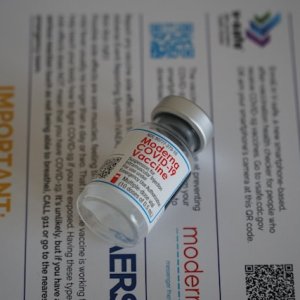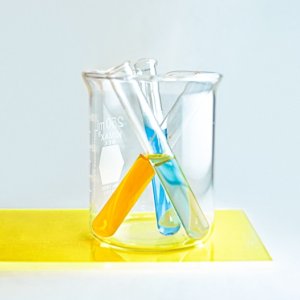
As R&D Costs Increase, the Industry Must Find Innovative Ways to Bring Them Down
The stage is set to break records for innovative medications. In 2019, pharmaceutical pipelines across the globe included 16,181 new molecules undergoing preclinical or clinical trials or in the approval and launch process. The number of small companies with only one or two molecules in the pipeline is growing but the bulk of pharmaceutical investment in R&D has been done by Big Pharma, with the 10 largest investors placing almost US$80 billion into research. Worldwide pharmaceutical and biotech R&D spending reached US$171 billion in 2018 and it is expected to climb to US$177 billion in 2019, according to Deloitte. While not all molecules in the pipeline will make it to the market, this is the largest pipeline in the history of the sector.
2018 was also a record-breaking year in the number of FDA approvals, with 59 new molecular entities approved during the year. Of these, 64 percent consisted of small molecules and the rest biotechnological products. Highlights of the year’s approvals include Onpattro from Alnyam Pharmaceutical, the first drug to act by RNA interference, and Luxturna by Spark Therapeutics, the first in vivo gene therapy that treats a specific genetic disorder to cure a specific kind of blindness.
About 56 percent of the approved medications target rare diseases, a significant leap from 2017’s 39 percent. As rare diseases affect a small segment of the population they had been mainly overlooked by the pharmaceutical industry, which targeted blockbuster drugs for large patient populations that would result in significant revenues. The trend has shifted thanks to regulatory changes in the US, which hosts 48 percent of companies that perform pharmaceutical R&D, according to Pharmaprojects. The changes provided incentives to companies that invest in the development of orphan drugs. As a result, more orphan drugs are expected to enter the market, with 4,615 molecules in the pipeline at various stages of development.
PERSONALIZED MEDICINE
Another growing trend in the sector is the shift toward personalized or precision medicine, which are medicines tailored to the needs of individual patients. “Personalized medicine aims to bring the correct therapy to the correct selected population. Based on their genetic characteristics, a therapy with greater success probabilities for this specific population is chosen. This allows a more efficient treatment for the diseases they are facing,” says Andrés Bruzual, General Manager of Roche Pharmaceuticals Mexico.
Continuous discoveries in the fields of genomics, proteomics and related fields have helped fuel medicinal personalization along with the growing number of wearable devices and the penetration of Big Data technologies that allow the constant collection of large amounts of information that can measure the impact of a treatment in real time. While there are still great strides to be made before tailoring a medicine to the specific genome of a patient, the sector is advancing its capabilities to target specific genetic mutations. While most are in clinical or preclinical stages, they are gradually making their way to the market. Personalized medicine is expected to represent US$87.7 billion by 2023, according to Deloitte.
While the potential to treat diseases that do not have a cure is attractive, personalization also represents a common challenge for both patients and the pharmaceutical industry: cost. IQVIA states that biotherapeutics can set a patient back more than US$100,000 per treatment. Moreover, due to their high specialization, there are very few target patients. Once a patient is cured, there is no continued flow of revenue for the manufacturer.
HIGHER COSTS
While the pipeline for new molecules is at a record high and pharmaceutical investment continues strong, returns on R&D investment keep shrinking for Big Pharma due to a significant increase in development costs. In 2010, the drug development process cost about US$1.17 billion from the development of the medication to its launch to market. By 2018, this cost more than doubled to US$2.8 billion on average per every new treatment, according to Deloitte. The consulting firm states the higher cost of pharmaceutical development has contributed to the shrinkage of returns on investment for new products. While in 2010 a company could expect a 10.1 percent return on investment for a new molecule, by 2018 this number had decreased to 1.9 percent.
The pharmaceutical sector is also facing a looming threat in the shape of patent expiration. This is a constant threat for the pharmaceutical sector as the end of patent protections leads to the introduction of less expensive generics. IQVIA estimates that patent expirations will cost Big Pharma US$121 billion between 2019 and 2023. The cure to this problem, however, seems clear. “The only way to address the challenge from generics is through innovation,” says Vincenzo D’Elia, General Manager of Laboratorios Alfasigma. “When a company constantly develops new products with a differentiated value, it will find a more effective way to compete in the market.”
Innovation is not limited to the lab. Pharmaceutical companies are increasingly investing in alternatives that streamline research efforts, including, but not limited to, artificial intelligence, automation and machine learning. Big Pharma is also acquiring innovation through M&As. This process allows large pharmaceutical companies to avoid the costs of early stage R&D, which also has a high rate of failure, and to bet only on promising products developed by smaller companies. Unlike these smaller companies, once it has identified an interesting target, Big Pharma can finance the large investment required to perform clinical trials, get the medicine approved by regulators, create marketing campaigns and distribute it. The largest announced acquisition in the first half of 2019 was Bristol-Myers Squibb’s plan to buy Celgene for US$74 billion.
BARRIERS TO INNOVATION
Once a new drug is approved, there is still a long way for it to access the market especially in emerging economies. “In developed countries, about 10 percent of the population has access to innovative medications. In emerging countries, these are only available to 1 percent of the population,” says Ana Longoria, President and Director General of Novartis Mexico. To enter the Mexican market, every drug requires COFEPRIS’s approval but this is only enough to be available in the private sector. Mexico’s public healthcare network provides care to 61 million of the country’s 129 million habitants and is the largest buyer of medications and medical supplies in the country.
For an innovative medication, being available in the public sector is nothing short of an odyssey. After gaining COFEPRIS’ seal of approval, a medication must be approved by the General Health Council followed by its addition to the basic list of the intended institution. As the public healthcare system is fragmented, the medication should go through individual approval processes for each different public institution, which include IMSS, ISSSTE, PEMEX, SEDENA, SEMAR and others. However, being part of a public institution’s basic list does not guarantee availability for the general public as 96 percent of medications acquired by the public sector are generics.
While this is an effective cost-saving measure, it leaves many Mexicans without access to the medications they need. For that reason, pharmaceutical companies are increasingly investing in the development of new market strategies that allow greater access to innovative medicines. “A way to fix this is through innovative access models in which the public sector pays only for results. We are talking with local authorities to introduce these models, which forces us to ensure that the medications we sell benefit the patient,” says Longoria. “This will be increasingly important with the arrival of personalized medicine.”
Through innovation, new medicines may be able to find a welcoming market in Mexico as the country’s rate of chronic diseases related to obesity and aging continues to climb. “The combination of precision diagnostics and personalized treatment will undoubtedly have a positive impact on Mexico’s most prevalent diseases,” says Bruzual.
















